
Your restaurant serves incredible food, provides excellent service, and creates memorable dining experiences. Yet tables remain empty during slow periods, your social media posts receive minimal engagement, and new customer acquisition feels like pushing a boulder uphill. Sound familiar? You’re not alone. Thousands of restaurant owners across the industry struggle with marketing, not because they lack culinary talent or hospitality skills, but because they’re unknowingly committing marketing mistakes restaurant owners make that sabotage their growth and profitability.
The restaurant industry is brutally competitive. With over 100,000 restaurants operating across Canada and new establishments opening constantly, effective marketing isn’t optional—it’s essential for survival. Yet many restaurant owners, trained in culinary arts or hospitality management rather than marketing, approach promotion with outdated tactics, minimal strategy, or sporadic efforts that produce disappointing results. These marketing missteps cost restaurants thousands in lost revenue, reduce profitability, and can ultimately lead to closure even when the food quality is exceptional.
This comprehensive guide reveals the five most damaging marketing mistakes restaurant owners consistently make, explains why these errors undermine your success, and provides actionable solutions to transform your marketing from ineffective expense to powerful revenue driver that fills tables, builds loyal customer bases, and creates sustainable competitive advantages in your market.
Mistake 1: Neglecting Online Presence and Digital Marketing
In an era where 90% of diners research restaurants online before deciding where to eat, your digital presence isn’t just important—it’s often the first and most critical impression you make on potential customers. Yet many restaurant owners still treat online marketing as an afterthought.
The Problem: Outdated Thinking in a Digital World
Common neglect patterns:
- No website, or website that hasn’t been updated in years
- Inactive or non-existent social media profiles
- Unclaimed or incomplete Google Business Profile
- No online reservation system integration
- Ignoring online reviews and customer feedback
- Missing from delivery platforms when offering takeout
- No email marketing to build customer relationships
Why this hurts: When potential customers can’t find you online, can’t see your menu, can’t read recent reviews, or can’t easily make reservations, they simply choose competitors with a stronger digital presence. You’re invisible to the massive audience searching for restaurants on their smartphones.
The Solution: Build a Comprehensive Digital Foundation
Essential digital presence elements:
Professional website:
- Mobile-responsive design (60%+ of traffic is mobile)
- Current menu with pricing and descriptions
- High-quality food and restaurant photography
- Embedded reservation system or clear booking instructions
- Location, hours, and contact information prominent
- Fast loading speed (under 3 seconds)
- Blog or news section for updates and storytelling
Google Business Profile optimization:
- Claim and verify your listing
- Complete every section with accurate information
- Upload fresh photos weekly
- Respond to all reviews within 24-48 hours
- Post updates about specials, events, and new menu items
- Use Google Posts for timely promotions
- Monitor Q&A section and provide helpful answers
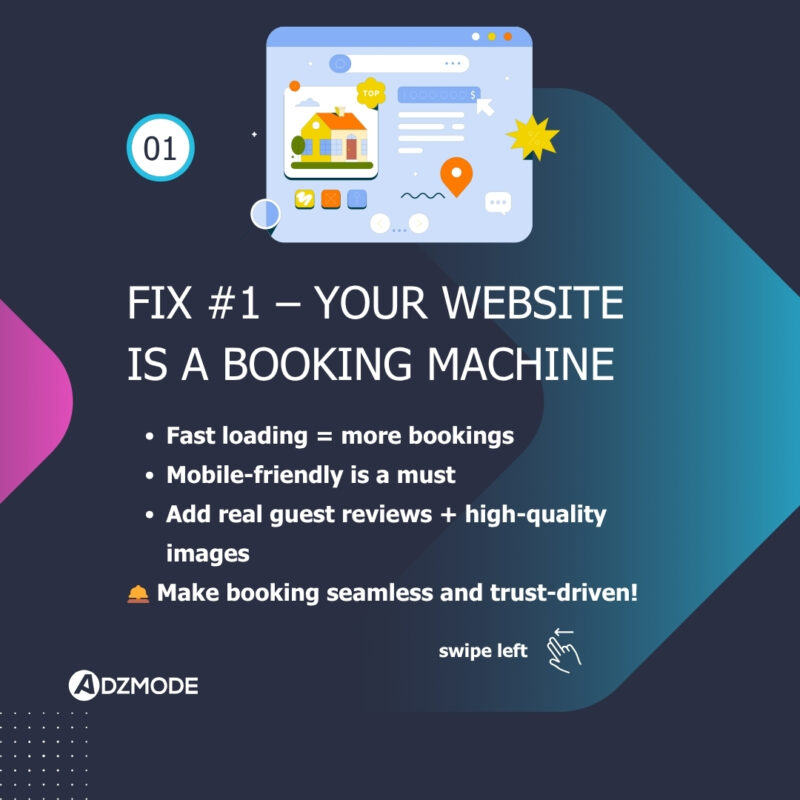
Active social media presence:
- Choose 2-3 platforms where your customers spend time (Instagram, Facebook typically essential)
- Post consistently (minimum 3-4 times weekly)
- Use high-quality visual content showcasing food and atmosphere
- Engage with comments and messages promptly
- Share behind-the-scenes content building connection
- Use stories and reels for authentic, timely updates
Online ordering integration:
- Direct ordering through your website when possible (avoid 30% third-party fees)
- Strategic presence on major delivery platforms (Uber Eats, DoorDash, SkipTheDishes)
- Clear communication about delivery areas and timing
- Menu optimization for delivery (items that travel well)
Review management:
- Monitor Google, Yelp, TripAdvisor, and Facebook reviews
- Respond professionally to both positive and negative feedback
- Address legitimate concerns publicly and offer to resolve issues
- Thank customers for positive reviews specifically
- Never argue or get defensive in public responses
Implementation timeline: Tackle these elements over 90 days rather than trying to do everything simultaneously. Start with Google Business Profile (most immediate impact), then website improvements, then systematic social media, then review management, and finally comprehensive platform integration.
For restaurant owners ready to transform their marketing from scattered efforts into a coordinated strategy that delivers measurable results, comprehensive programs for digital marketing for restaurants provide the expertise, execution, and accountability that busy restaurant operators need. Professional digital marketing specialists understand the restaurant industry’s unique challenges and opportunities, creating integrated campaigns that combine social media management, search engine optimization, email marketing automation, online reputation management, and targeted advertising that works together synergistically to fill tables during slow periods, promote special events, build loyal customer bases through relationship marketing, and maximize return on every marketing dollar invested across channels. Most restaurants lack the time or expertise to manage effectively while running daily operations.

Mistake 2: Inconsistent or Non-Existent Social Media Strategy
Having social media accounts isn’t the same as having a social media strategy. Many restaurants post sporadically, share content that doesn’t resonate with their audience, or maintain profiles that sit dormant for weeks, creating worse impressions than having no presence at all.
The Problem: Random Acts of Social Media
Common inconsistency patterns:
- Posting irregularly (active for a week, then silent for a month)
- Sharing only promotional content (specials, discounts, ads)
- Using poor quality photos taken on old smartphones in bad lighting
- Ignoring comments, messages, and customer engagement
- No cohesive visual aesthetic or brand voice
- Posting the same content across all platforms without adaptation
- Forgetting to include location tags, relevant hashtags, or calls-to-action
Why this hurts: Inconsistent social media signals to potential customers that your restaurant might be inconsistent in other areas. Dead social profiles suggest a dead restaurant. Purely promotional content fails to build emotional connections that drive loyalty. Poor content gets ignored by algorithms, reducing your organic reach to near zero.
The Solution: Develop a Strategic Social Media System
Content pillars for restaurants:
Behind-the-scenes content (25% of posts):
- Chef preparing signature dishes
- Kitchen team camaraderie and culture
- Ingredient sourcing and quality focus
- Restaurant preparation before service
- Team member spotlights and stories
Food showcase content (35% of posts):
- Professional-quality photos of signature dishes
- Close-ups highlighting ingredients and textures
- Seasonal menu additions and specials
- Chef’s recommendations and pairings
- Process videos showing dish preparation
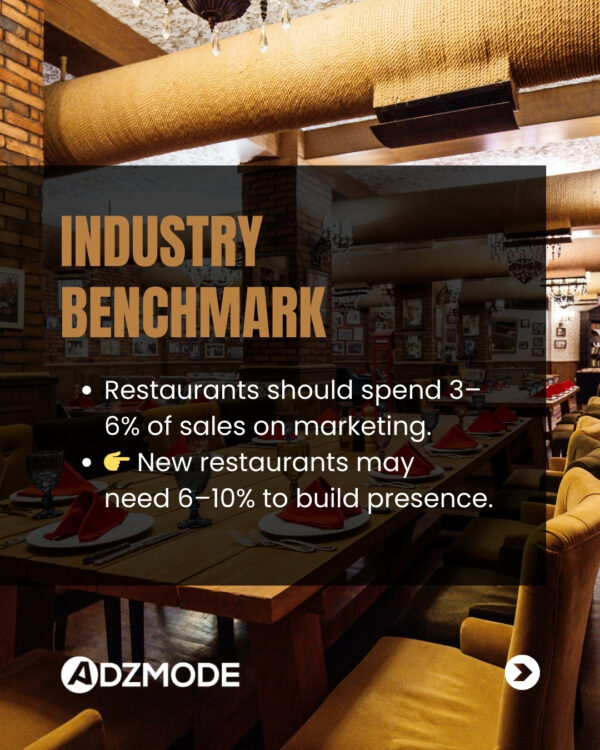
Customer experience content (20% of posts):
- Dining room atmosphere and ambiance
- Special occasions and celebrations
- Customer testimonials and reviews
- User-generated content (repost customer photos with permission)
- Events and private dining experiences
Community and values content (15% of posts):
- Local partnerships and ingredient sources
- Community involvement and charity support
- Sustainability and environmental initiatives
- Cultural celebrations and educational content
- Staff achievements and milestones
Promotional content (5% of posts):
- Special offers and limited-time promotions
- New menu launches and seasonal changes
- Event announcements and reservation availability
- Contest and giveaway information
Posting frequency best practices:
- Instagram: 4-7 posts per week plus daily stories
- Facebook: 3-5 posts per week
- TikTok: 3-5 videos per week if targeting younger demographics
- LinkedIn: 2-3 posts per week if targeting corporate events/catering
holiday promotions that drive restaurant sales
Engagement best practices:
- Respond to every comment on your posts within 2-4 hours
- Reply to direct messages within 1 hour during business hours
- Like and comment on posts from customers who tag you
- Share user-generated content to your stories (with permission)
- Ask questions in captions to encourage engagement
- Use polls and interactive features in stories
Content creation system:
- Batch create content weekly (dedicated 2-3 hour session)
- Use scheduling tools (Meta Business Suite, Later, Hootsuite)
- Maintain content calendar planning 2-4 weeks ahead
- Capture content during service (designate team member)
- Create templates for a consistent visual aesthetic
- Develop caption templates for efficiency
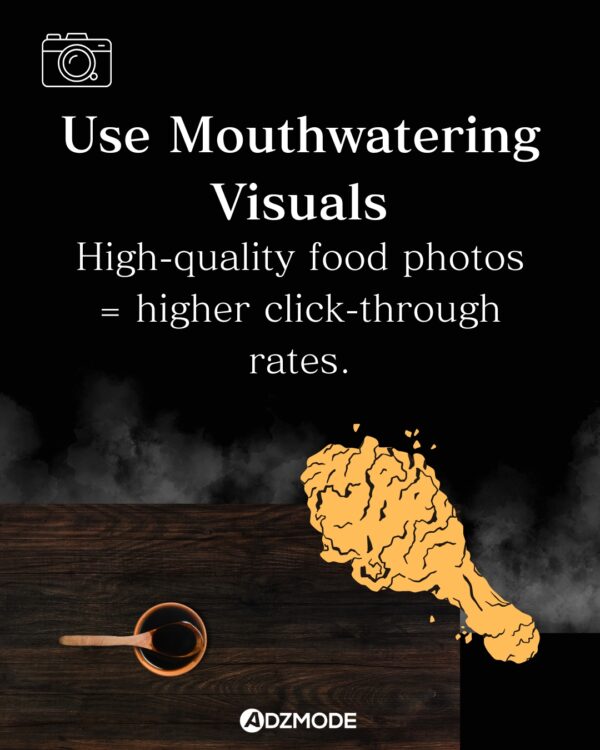
Mistake 3: Ignoring or Mishandling Online Reviews
Reviews are the modern word-of-mouth, influencing up to 93% of dining decisions, according to industry research. Yet many restaurant owners either ignore reviews entirely, respond inappropriately to negative feedback, or fail to encourage satisfied customers to share their experiences.
The Problem: Review Neglect or Mismanagement
Common review mistakes:
- Never responding to any reviews, positive or negative
- Only responding to negative reviews (ignoring positive feedback)
- Arguing with or attacking customers who leave negative reviews
- Making excuses rather than acknowledging issues and offering solutions
- Taking days or weeks to respond when timeliness matters
- Generic, copy-paste responses lacking personalization
- Never ask satisfied customers to leave reviews
Why this hurts: Unresponsive restaurants appear not to care about customer feedback. Defensive or argumentative responses to criticism publicly damage your reputation far worse than the original negative review. Potential customers reading review exchanges judge how you handle problems—professional responses build trust even when addressing complaints.
The Solution: Implement Proactive Review Management
Review generation strategy:
Making it easy for happy customers:
- QR codes on table tents or receipts linking to review platforms
- Friendly staff requests during excellent dining experiences
- Follow-up emails 24 hours after dining with a review link
- Thank-you cards with a gentle review request
- Loyalty program points for leaving reviews (where permitted)
- Train staff to identify delighted customers to request reviews
Timing matters: Ask for reviews immediately after positive interactions while the experience is fresh and emotions are positive.
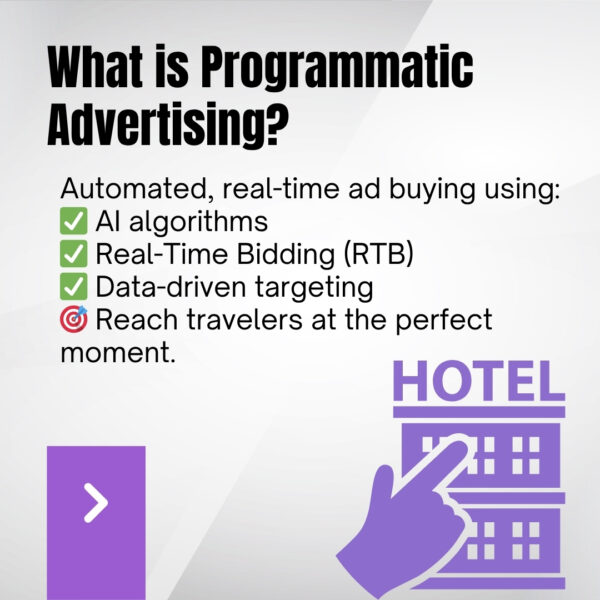
Response strategy for positive reviews:
Effective positive review responses include:
- Thank the customer by name
- Mention specific details they shared (favorite dish, server name)
- Reinforce your commitment to quality and service
- Invite them to return for specific upcoming features
- Keep responses authentic and varied, not templated
Example: “Thank you so much, Jennifer! We’re thrilled you enjoyed the wild mushroom risotto—Chef Marco takes great pride in sourcing local ingredients. We can’t wait to welcome you back when our spring menu launches next month!”
Response strategy for negative reviews:
Professional negative review responses:
- Thank them for feedback (shows you value customer input)
- Apologize sincerely without making excuses
- Address specific issues mentioned
- Offer to discuss offline (provide contact information)
- Share what you’re doing to prevent future issues
- Take the high road regardless of review tone
Example: “We’re truly sorry your experience didn’t meet expectations, David. The wait time you mentioned is unacceptable, and we’re addressing our reservation system to prevent this issue. We’d appreciate the opportunity to make this right—please contact me directly at [manager email] so we can invite you back for a complimentary meal.”
What NOT to do:
- Argue about facts or blame the customer
- Question their account of events accusatorily
- Get personal or emotional in responses
- Ignore the review, hoping it goes away
- Ask them to remove the review (against most platform policies)
- Accuse competitors of fake reviews publicly
Review the monitoring system:
- Set up Google Alerts for your restaurant name
- Use review aggregation platforms (Birdeye, Podium, ReviewTrackers)
- Check all major platforms daily
- Assign responsibility to a specific team member
- Establish response time standards (24-48 hours maximum)
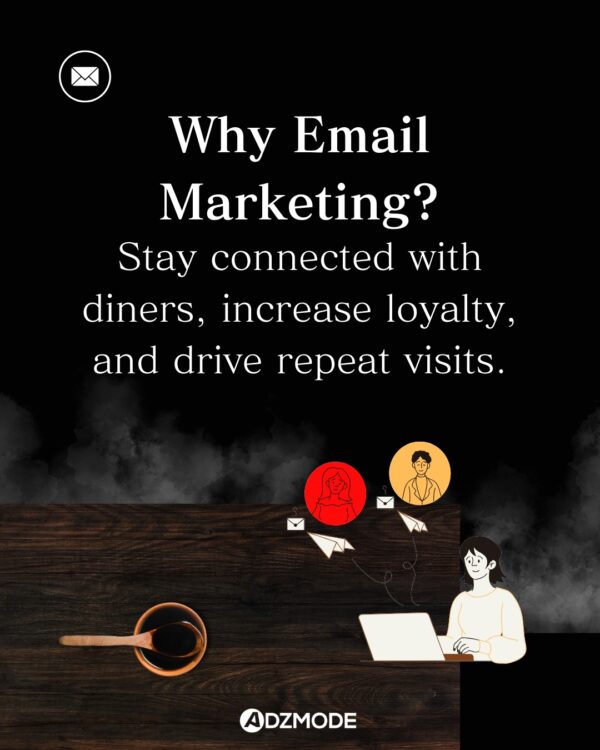
Mistake 4: Failing to Build and Utilize a Customer Database
Most restaurants interact with hundreds or thousands of customers monthly, yet capture minimal customer information and fail to build ongoing relationships. This represents an enormous lost opportunity for repeat business and customer lifetime value.
The Problem: Transaction-Only Mindset
Common database failures:
- No system for collecting customer contact information
- Reservation systems not integrated with marketing platforms
- Point-of-sale systems not configured for customer data capture
- No email marketing to past customers
- Missing opportunities to promote to the existing customer base
- Treating every customer as a new customer rather than building relationships
- No segmentation or personalization of marketing messages
Why this hurts: Acquiring new customers costs 5-25 times more than retaining existing customers. Restaurants without customer databases spend all their marketing budget on acquisition while ignoring the goldmine of past customers who already know, like, and trust them. Average customer lifetime value remains low when there’s no system for encouraging repeat visits.
The Solution: Build a Customer Database and Relationship Marketing System
Data collection methods:
Reservation systems:
- Capture name, phone, email, party size, occasion
- Note dietary preferences and restrictions
- Track visit frequency and spending patterns
- Record special occasions (birthdays, anniversaries)
- Tag VIP customers and regulars
Email capture at point of sale:
- Offer Wi-Fi password in exchange for email
- Loyalty program enrollment, collecting contact information
- Digital receipts requiring an email address
- Contest entries and giveaways
- Newsletter signup incentives (exclusive recipes, first access to reservations)
Loyalty program integration:
- Points-based systems encourage repeat visits
- Digital punch cards are more convenient than physical ones
- Tiered rewards recognizing your best customers
- Birthday and anniversary perks
- Referral bonuses for bringing new customers
Email marketing implementation:
Welcome series for new subscribers:
- Immediate welcome email with your story and values
- Introduction to signature dishes and the chef
- Special offer encouraging first or return visit
- Behind-the-scenes content building a connection
Regular newsletter cadence:
- Monthly newsletters (minimum) with updates, recipes, events
- Seasonal menu change announcements
- Special event invitations
- Exclusive offers for email subscribers
- Holiday and special occasion promotions
Segmentation strategies:
- Frequency: regulars vs. occasional vs. one-time visitors
- Preferences: dietary restrictions, favorite menu categories
- Geography: distance from restaurant influences takeout vs. dine-in messaging
- Occasions: business lunches, date nights, family dinners
- Spending: VIP high-spenders get different communication
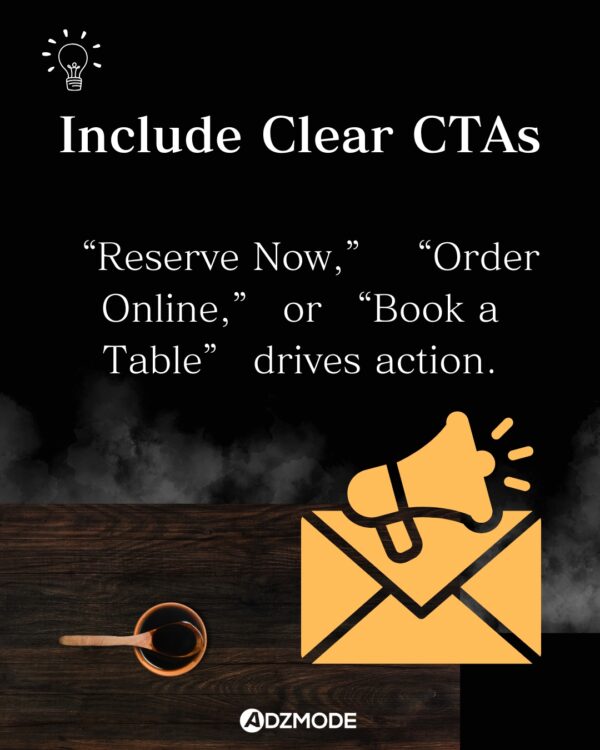
Automation opportunities:
- Birthday and anniversary emails with special offers
- Win-back campaigns for customers who haven’t visited in 60+ days
- Post-visit thank you emails encouraging reviews
- Reminder emails about reservations
- Seasonal menu change announcements to past customers
SMS marketing (use carefully):
- Requires explicit opt -in consent
- Limited to truly time-sensitive offers
- Last-minute table availability for regulars
- Same-day special promotions
- Weather-related pivots (patio now available, etc.)
For restaurants, recognizing that effective marketing requires specialized expertise, coordinated strategy, and consistent execution that’s nearly impossible to maintain while managing daily operations, partnering with the best social media marketing agency specializing in hospitality provides access to proven systems, creative talent, and strategic thinking that transforms marketing from a cost center to a profit driver. Elite social marketing agencies bring deep restaurant industry experience, understanding which content formats drive engagement and conversions, how to build authentic brand voices that resonate with target demographics, when to deploy paid advertising for maximum return, and how to create cohesive campaigns across platforms that build awareness, drive traffic, and cultivate loyalty—all while you focus on what you do best: creating exceptional dining experiences that keep customers returning and referring others.

Mistake 5: No Tracking, Measurement, or Strategy Adjustment
Many restaurants engage in marketing activities without measuring results, understanding what’s working, or making data-driven decisions. This “spray and pray” approach wastes budget on ineffective tactics while underinvesting in high-performing channels.
The Problem: Flying Blind Without Data
Common measurement failures:
- No tracking of which marketing channels drive customers
- Unknown return on investment for marketing spend
- Inability to identify the most profitable customer segments
- No testing or optimization of campaigns
- Continuing ineffective tactics out of habit
- Making decisions based on gut feeling rather than data
- No clear marketing goals or key performance indicators
Why this hurts: Without measurement, you can’t distinguish between marketing that drives revenue and marketing that wastes money. You’ll continue investing in tactics that feel productive but deliver minimal returns while missing opportunities to scale what actually works. The budget gets allocated based on preference rather than performance.
The Solution: Implement a Data-Driven Marketing Approach
Essential metrics to track:
Acquisition metrics:
- New customers by source (how they heard about you)
- Cost per acquisition by channel
- Website traffic and sources
- Social media reach and engagement rates
- Email subscriber growth rate
- Review platform visibility and ranking
Engagement metrics:
- Email open rates and click-through rates
- Social media engagement (likes, comments, shares, saves)
- Website bounce rate and time on site
- Reservation completion rate
- Online ordering cart abandonment rate
Conversion metrics:
- Reservation conversion rate
- Online ordering conversion rate
- Promotional redemption rates
- Email campaign revenue attribution
- Table turn times and covers per service
Retention metrics:
- Customer visit frequency
- Average time between visits
- Repeat customer percentage
- Customer lifetime value
- Churn rate (customers who stop visiting)
Financial metrics:
- Revenue per available seat hour
- Average check size by customer segment
- Marketing spend as a percentage of revenue
- Return on marketing investment
- Profit margin by customer type
Tracking implementation:
Source tracking methods:
- Ask, “How did you hear about us?” during the reservation
- Train staff to ask and record during dining
- Unique phone numbers for different marketing channels
- UTM parameters on all digital marketing links
- Unique promo codes for different campaigns
- QR codes with tracking for print materials
Analytics platforms:
- Google Analytics for website traffic and behavior
- Social media platform insights (Meta, Instagram, TikTok analytics)
- Email marketing platform reports (open rates, clicks, revenue)
- Reservation system analytics
- POS system reports by customer segment
- Call tracking software for phone reservations
Monthly marketing dashboard:
Create a single-page dashboard reviewed monthly, showing:
- Total marketing spend by channel
- New customers acquired by channel
- Revenue generated by the marketing channel
- Return on investment by channel
- Key performance indicators trends
- Action items based on data
Testing and optimization:
A/B testing opportunities:
- Social media post times and content types
- Email subject lines and send times
- Promotional offers and incentives
- Landing page layouts and calls-to-action
- Ad creative and targeting parameters
Test one variable at a time: Change only one element so you can identify what actually impacted results.
Budget reallocation:
- Review quarterly, which channels drive best ROI
- Increase budget to high-performing channels
- Reduce or eliminate spending on low-performers
- Test new channels with small budgets
- Scale successes, cut failures quickly
Strategy adjustment cycle:
- Weekly: Review immediate metrics and adjust tactics
- Monthly: Analyze overall performance and reallocate budget
- Quarterly: Strategic review of approach and major adjustments
- Annually: Complete marketing plan revision based on the year’s learning
Implementing Solutions: Your 90-Day Action Plan
Fixing all five mistakes simultaneously is overwhelming. Use this phased approach:
Weeks 1-4: Digital Foundation
- Claim and optimize Google Business Profile
- Audit and update website (or hire a professional if needed)
- Set up basic review monitoring and response system
- Choose primary social platforms and create a content calendar
Weeks 5-8: Content and Engagement
- Implement a consistent social media posting schedule
- Develop a review generation process with staff
- Create first email marketing campaign
- Set up basic customer database collection
Weeks 9-12: Measurement and Optimization
- Implement tracking systems for all marketing channels
- Create marketing dashboard
- Review the first two months of data
- Adjust strategy based on early results
Ongoing: Continuous Improvement
- Maintain consistent execution of working tactics
- Test new approaches quarterly
- Review and optimize monthly
- Stay current with industry marketing trends
Frequently Asked Questions (FAQ)
Q. How much should restaurants spend on marketing?
Industry benchmarks suggest 3-6% of gross revenue for established restaurants, 8-12% for new restaurants in their first year. Within this budget, allocate 60-70% to digital marketing, 20-30% to traditional marketing, and 10% to testing new channels. Focus more on effective execution than total spending—well-executed small budgets outperform poorly managed large budgets.
Q. Can I handle restaurant marketing myself or do I need to hire help?
You can handle basic marketing yourself (social media posts, review responses, Google Business Profile updates), but most restaurant owners lack time and expertise for comprehensive strategy. Consider hybrid approach: handle day-to-day content while hiring professionals for strategy development, technical implementation (website, email automation), paid advertising management, and analytics tracking that require specialized skills.
Q. What’s the single most important marketing activity for restaurants?
If forced to choose one, Google Business Profile optimization delivers the greatest return—it’s free, appears in high-intent “restaurant near me” searches, and directly influences dining decisions. However, effective marketing requires integrated approach across multiple channels. There’s no silver bullet—consistent execution across fundamentals (website, social media, reviews, email) produces results.
Q. How long does it take to see results from improved restaurant marketing?
Some tactics produce immediate results (Google Business optimization, paid advertising), while others build over time (social media following, email list, SEO). Expect to see early indicators within 30-45 days, meaningful improvement within 90 days, and substantial results within 6 months. Marketing is a marathon, not a sprint—consistency matters more than perfection.
Q. Should I focus on social media or Google advertising first?
Start with free or low-cost tactics (Google Business Profile, organic social media, review management, email marketing) before investing in paid advertising. Once these foundations work effectively, add paid advertising to scale what’s already working. Paid ads amplify good marketing; they don’t fix bad marketing. Build an organic foundation first, then advertise.
Boost reservations with Facebook Ads
Conclusion:
The marketing mistakes restaurant owners make are outlined in this guide—neglecting digital presence, inconsistent social media, mishandling reviews, failing to build customer databases, and ignoring measurement—costing restaurants millions in lost revenue annually. Yet each mistake is entirely fixable with a systematic approach, consistent execution, and willingness to learn from data.
Your restaurant’s success doesn’t depend solely on food quality and service excellence—it requires effective marketing that attracts new customers, encourages repeat visits, and builds loyal communities around your brand. In today’s competitive landscape, restaurants with strong marketing systems thrive, while those relying on location and luck struggle.
Start today by choosing one mistake from this guide and committing to fix it over the next 30 days. Whether it’s claiming your Google Business Profile, implementing consistent social posting, or creating your first customer database, forward progress beats perfection. Build momentum through small wins, then tackle the next challenge.
Your tables don’t have to sit empty. Your social media doesn’t have to remain ignored. Your marketing doesn’t have to waste money on ineffective tactics. With the strategies outlined in this guide, you can transform your restaurant marketing from a source of frustration to a powerful driver of growth, profitability, and long-term success in your market.
The question isn’t whether you can afford to improve your marketing—it’s whether you can afford not to when your competitors are implementing these strategies right now, capturing the customers who should be dining at your restaurant.
Share Your Project Requirements With Us






